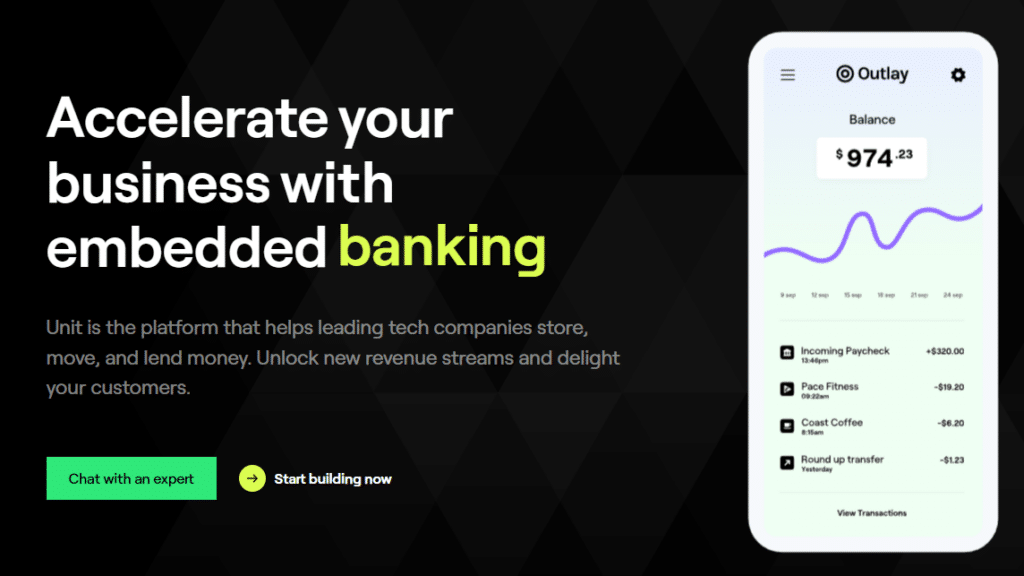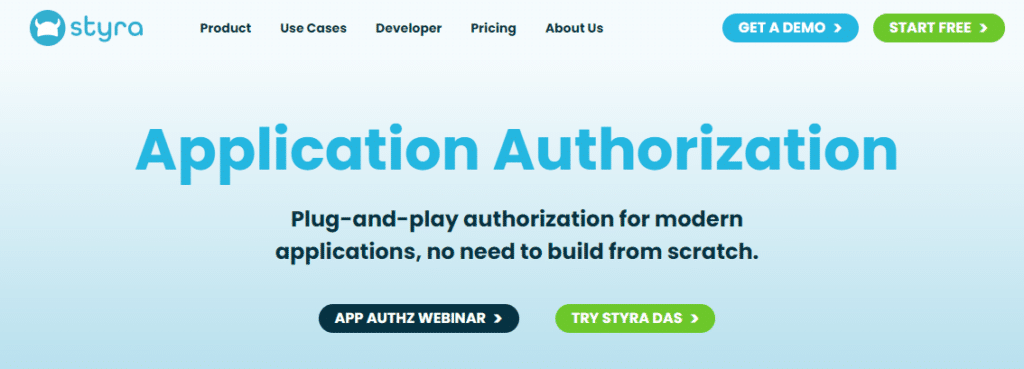As a startup founder, business traction is an important concept to understand in your quest to establish your company and achieve lasting success. Traction is all about how well a startup attracts new customers and showcases consistent growth. It’s the foundation upon which your company’s future is built, proving your business model’s worth and helping you to go from startup to standout.
But how do you keep yourself from losing momentum and running out of gas? And how do you ensure you’re on the right track in the first place? In this guide, I’ll discuss the various indicators of traction, proven strategies for gaining traction, key metrics to track and the significance of traction when attracting investors.
What is business traction, and why does it matter?
Business traction reflects how well your tech startup is performing, especially in the early pre-growth stages. It’s evidence of a startup’s ability to attract and retain customers, generate revenue and achieve product-market fit. It may sound like an abstract concept, but traction or startup momentum is an important factor that investors, partners and customers consider when evaluating a startup’s future worth and prospects.
Product-market fit refers to the point at which a product or service meets its target market’s genuine needs and demands, and getting to it should be the main goal of your traction phase. Achieving product-market fit shows your startup has successfully identified and addressed a problem that customers are willing to pay to solve. Strong revenue generation and customer retention are also vital elements of business traction, as they demonstrate that your startup has a sustainable model and is creating value for its customers.
Traction is one of the most important things investors look for in pitch deck slides. They want to see that your startup has a clear value proposition, a large and growing market, a scalable business model and enough momentum to make it over to the next round.
So, the more traction you have, the more likely you are to attract potential investors and receive the funding you need. It’s also great for boosting team morale.
Business growth vs traction: What’s the difference?
Business traction is different from business growth because it focuses on the quality and sustainability of the customer base rather than the quantity and speed of acquisition. Focusing on growth or traction may also depend on your startup lifecycle stage. Traction is essential early on, and then you can transition to growth by optimizing your business and tweaking processes.
Business growth can be achieved by allocating more budget to marketing and sales, but it may not always reflect the true demand or satisfaction of customers. For example, a startup may have high user acquisition or revenue growth but low retention or engagement, indicating growth but poor traction.
Business traction also means customers are loyal, engaged and willing to pay for the product or service. These customers will likely recommend others and create a steady revenue stream that can be reinvested into the business. This validation allows a startup to scale operations and reach out to new investors with confidence. In other words, business traction is the key that unlocks the door to sustainable business growth.
Indicators of business traction
Identifying the right traction indicators for your business depends on your current goals and objectives. For example, if you are a Series A or seed stage startup focused on validating your product market fit, you may want to measure indicators such as user acquisition, retention and engagement. If you are a revenue-generating startup focused on scaling and growth after your Series B round, you may want to measure traction metrics such as revenue, profitability and customer lifetime value (CLV).
Regardless of your startup traction stage, here are six indicators you should use as general benchmarks for success:
User acquisition and retention
Attracting new users and retaining existing ones is crucial to building a solid customer base. User acquisition demonstrates the effectiveness of marketing efforts and the appeal of your product or service. Retention, on the other hand, highlights your startup’s ability to consistently deliver value and meet customer expectations.
- What to look out for: Customer acquisition cost (CAC), churn rate and customer lifetime value (CLV).
Sales growth
Tracking sales growth allows startups to evaluate their sales strategies and measure the demand for their offerings. Consistent sales growth is a positive indicator of traction, as it shows your ability to generate revenue and expand market share.
- What to look out for: Monthly recurring revenue (MRR), annual recurring revenue (ARR) and average deal size.
Market penetration and expansion
Successfully penetrating and expanding within the market is evidence of a startup’s adaptability and growth potential. Market penetration is achieved when a startup effectively tailors its offerings to the needs of its target audience. Expansion signifies that a company is exploring new markets and customer segments, showcasing agility and a capacity for growth.
- What to look out for: Market share, total addressable market (TAM) and market growth rate.
Customer engagement and feedback
High levels of customer engagement and valuable feedback from users are vital for continuous improvement and innovation. Engaged customers are more likely to become advocates, and feedback, both positive and negative, enables you to refine your offerings and better align them with customer needs and preferences.
- What to look out for: Customer satisfaction scores (CSAT), net promoter score (NPS) and user engagement rates.
Brand recognition and reputation
Brand recognition, achieved through effective marketing and memorable branding, helps in acquiring customers and partners. A solid reputation built on trust and quality also ensures this attention translates into long-lasting relationships and collaborations.
- What to look out for: Referral rate, brand awareness and online sentiment.
Being a source of information in your industry might impact brand perception more than you realize.
Partnership and collaboration opportunities
Forming partnerships and collaborating with other industry players is a significant indicator of your standing within the market. Establishing alliances not only demonstrates a startup’s credibility but also provides access to resources, knowledge and networks that can fuel further growth and innovation.
- What to look out for: The number of strategic alliances, joint ventures and co-marketing initiatives and the impact of these collaborations on your business performance and growth.
📈Read success stories of tech startups that partnered with us to grow their online leads.
How to get business traction for your startup
“Every time we launch a feature, people yell at us.”
~ DeviantArt co-founder Angelo Sotira
Getting initial traction may be one of the most challenging things you have to do as a founder. Cliched as it sounds, the first customers ARE always the hardest to attract. And they will be critical. The good news is that any feedback, even negative, is a form of traction and engagement.
So when working with a small budget and limited brand awareness, your approach to getting traction must be structured, data-backed and adaptable to changing conditions. The process also needs to be repeatable as your startup scales and progresses.
Let’s look at a few best practices and strategies for building and maintaining business momentum:
Understand your target market
Start by identifying and understanding your target market through market segmentation, market size estimation and thorough market research.
Market segmentation
Market segmentation involves dividing potential customers into distinct groups based on shared characteristics, allowing you to tailor your marketing efforts and products to meet the specific needs of each group.
Market size estimation
Estimating market size enables you to evaluate the potential scope of your startup or business idea. To get an understanding of your market, asses the following metrics:
- Total addressable market (TAM): The total revenue opportunity available for a product or service, assuming universal market reach. Basically, TAM is the total demand for a product or service across all segments, geographies and customer types.
- Serviceable addressable market (SAM): The portion of the TAM your company can directly target and serve. Consider factors such as regulatory constraints, market access and logistical considerations that may further narrow down your achievable market segment.
- Serviceable obtainable market (SOM): The portion of SAM your business can realistically capture in the short to medium term. Also known as the share of market, SOM can be used to set realistic initial revenue targets.
These estimates provide insights into the market potential and inform realistic growth projections and revenue forecasts.
Market research
Market research helps you better understand your target audience and their needs, preferences and pain points. Surveys, interviews, focus groups and current market reports are your primary research methods that can be used alongside secondary techniques, such as competitor insights and existing market reports.
This information will enable you to make informed decisions about your product direction, pricing strategy and marketing approach, increasing your chances of achieving business traction.
Read more about TAM, SAM and SOM and how these metrics help you develop your B2B go to market (GTM) strategy.
Develop a unique value proposition (UVP)
Your startup must establish a unique value proposition to stand out in a competitive market and attract customers. A UVP highlights the inherent value your product or service offers to customers, encapsulated in a compelling statement.
Begin by pinpointing your product’s primary benefits to your buyer personas. Give particular attention to the pain points it addresses and the results it promises. Always make sure that you are showing value to the customer from their own perspective.
Next, craft a concise statement summarizing your value proposition(s). This isn’t a pitch in the traditional sense but a clear, concise statement that highlights the transformative potential of your product or service. Test and validate your UVP with target customers, colleagues or friends to get feedback on how it resonates with them.
Examples of excellent UVPs include:
LearnWorlds
LearnWorlds is an online course platform, and the UVP is immediately clear after landing on their homepage. Their customers are able to monetize their skills, reach and expertise by creating, selling and promoting online courses using a single platform.

Unit
Unit is a fintech solution that caters to SaaS platforms and marketplaces. The UVP on their homepage works because it indicates Unit’s customers (other tech platforms) can improve customer satisfaction, accelerate business growth and unlock new revenue streams through embedded banking.

Designing authorization solutions in-house for modern applications can be complex and resource-intensive. Styra’s UVP on their landing page clearly communicates how customers can simply plug and play this authorization system into their applications and considerably shorten their time to market.

Choose the right mix of marketing channels
Your marketing strategy must always resonate with your target audience if you want your business to gain traction. You will also need to determine how much money you can allocate for your marketing activities and how to distribute it across different channels and campaigns. Track and monitor your marketing return on investment (ROI) across these channels to optimize future campaigns.
Prevalent B2B startup marketing channels include:
- Content marketing: Developing and sharing valuable, relevant and informative content to attract and engage your customers. According to Demand Gen Report, 55% of B2B buyers reported relying more on content to research and make decisions independent of sales. Content can include blog posts, articles, videos, podcasts or infographics. Search-optimized content marketing helps you establish your authority and credibility in your niche, educate potential customers about your products or services and generate high-quality leads and conversions.
- Social media marketing: Using social media platforms such as Facebook, Twitter and LinkedIn to connect with your audience, share updates and promote your content. According to the Content Marketing Institute, 93% of respondents considered LinkedIn an effective B2B platform, with Facebook having the lowest ratings. Engaging with users on social media helps build relationships, fosters brand loyalty and increases exposure to potential customers.
- Email marketing: Sending personalized content, promotional offers and updates about your product or service to an email list of leads and customers. Several platforms, such as Mailchimp, SendinBlue or HubSpot, provide automation and segmentation tools to help you reach your target audience directly.
- Website design and branding: Designing your website to be user-friendly, attractive, responsive, fast-loading and optimized for search engines and mobile devices. Your website is the center of your online presence and should be the main source of information about your business. You should also include clear and compelling calls to action (CTAs) encouraging visitors to take the next step in their buyer journey.
- Paid advertising: Investing in paid advertising campaigns to drive targeted traffic and generate growth, including search engine, social media and display advertising. You may find that certain channels perform better for specific objectives or during specific periods. Stay flexible and be prepared to reallocate your budget and resources accordingly.
Establish a sales process
A robust sales process is vital for SaaS startups to convert leads into paying customers, driving business traction and revenue growth. At Productive Shop, we have seen startups with excellent marketing and traction go under because of poor sales processes and an inability to close deals. There are several key components to developing an effective sales process:
- Define your sales process: Outline each stage, from lead generation to customer acquisition. Clearly identify the objectives, main activities and desired outcomes at each stage to create a structured and repeatable process.
- Lead generation and qualification: Use the marketing channels I have previously discussed to generate steady leads for your sales team. Develop criteria to qualify leads and prioritize prospects (within your CRM) with the highest potential for conversion, ensuring that your sales team focuses on the most promising opportunities. Lead qualification criteria can be based on a framework like budget, authority, need, timing (BANT), challenges, authority, money, prioritization (CHAMP) or any other that fits your business model.
- Sales funnel optimization: Analyze and optimize your sales funnel to identify any bottlenecks or inefficiencies hindering conversions. Implement customer journey mapping, for example, to improve lead nurturing, overcome objections and shorten the sales cycle.
- Training and development: Invest in your sales team’s ongoing training and development to ensure they have the skills, knowledge and resources needed to excel. Provide coaching on effective sales techniques, product knowledge and customer relationships to help your team close deals and foster long-term connections with clients.
- Customer relationship management (CRM) software: Track and manage customer interactions with a CRM system. CRM solutions such as Hubspot can help you monitor the progress of deals, analyze customer data and automate follow-up activities, streamlining your sales process and enabling the team to work more efficiently.
It is important to note that post-COVID, many B2B buyers have grown accustomed to the speed and convenience of the new digital sales channels. McKinsey reports that around 70-80% of B2B decision-makers now prefer remote interactions and self-serve options over traditional field-sales models, and 89% predict that this trend will continue in the future.
Grow your customer base
To demonstrate business traction, startups need to expand their customer base and be able to retain new users. Consider running incentive programs to reward customers for their continued loyalty and support. Incentives may include discounts, exclusive offers or early access to upcoming features and can be highly effective in encouraging repeat purchases, increasing customer lifetime value and fostering long-term relationships.
Another way to leverage your existing customer base to acquire new ones is to develop a referral program. A well-designed referral program can help tap into new networks, drive word-of-mouth marketing and lower customer acquisition costs.
A potent strategy startups should also consider is product led growth (PLG). Offering potential customers a free trial or limited-time access to your product or service, showcasing its value and the pain points it solves, increases the likelihood of conversion without depending heavily on sales or marketing. To maximize the effectiveness of a PLG strategy, ensure the onboarding process is seamless, provide ample support and resources and follow up with prospects to gather feedback.
Monitor traction metrics
It is imperative to continuously monitor and adjust your strategies based on data-driven insights. Keep a close eye on the performance of your efforts to identify areas for improvement, optimize tactics and make informed decisions to drive traction.
Business traction metrics can be broadly divided into three categories. Each category has been highlighted with three key metrics:
| Metric | Description | Formula |
|---|---|---|
| User metrics | ||
| Monthly active users (MAUs) | The number of registered users who engage with your product or service within a given month | Total unique users active in a month |
| Churn rate | The percentage of customers who stop using your product or service over time | (Lost customers per period/Total customers at the start of the period) x 100 |
| Net promoter score (NPS) | The level of customer satisfaction and loyalty based on the likelihood of recommendations | % of promoters (score 9-10) - % of detractors (score 0-6) |
| Financial metrics | ||
| Revenue growth rate | The percentage increase in revenue over a given period | The percentage increase in revenue over a given period |
| Burn rate | The rate at which your startup spends its cash reserves | (Starting cash balance - ending cash balance)/Number of months |
| Cash runwayCash runway | The amount of time your startup can continue operating at its current burn rate | Cash on hand/Monthly burn rate |
| Operational metrics | ||
| Conversion rate | The percentage of leads or prospects who become paying customers | (Number of sales/Number of leads) x 100 |
| Sales cycle length | The average duration to close a sale | The sum of sales cycle duration/Number of sales |
| Customer support response time | The average time your customer support team takes to respond to inquiries | Total response time/Number of inquiries |
Implement analytics and tracking tools, such as Google Analytics or Hotjar, or use your CRM software to record metrics and measure the effectiveness of your marketing, sales and customer acquisition efforts. Conduct regular performance reviews to assess the progress of your initiatives and test, learn and refine tactics based on the startup traction data you collect.
How can a startup demonstrate traction to investors?
Showcasing traction to investors requires a combination of data and stories. Data highlights the quantitative aspects of your startup’s performance, while stories illustrate the qualitative value your startup brings to the marketplace. Together, they paint a vivid picture of your startup’s potential and progress.
To effectively use data and storytelling:
- Focus on meaningful metrics: Select key traction metrics representing your startup’s goals and achievements, and avoid vanity metrics that don’t demonstrate any real value or growth. For instance, emphasize active users or paying customers rather than downloads or sign-ups, and showcase profit or cash flow instead of total revenue.
- Use benchmarks and comparisons: Contextualize your metrics. Compare your growth to similar startups or highlight how your metrics stack against established competitors and market leaders.
- Incorporate testimonials and case studies: Highlight customer satisfaction and market validation with testimonials and case studies from users or customers. Share quotes from satisfied customers detailing how your product or service solved specific problems or met their goals.
- Share stories and anecdotes: Storytelling sells products and turns brands into household names. Communicate your passion and vision through narratives that explain why you started your venture, its impact and your future goals. Include personal stories about experiencing the problem firsthand or witnessing someone else struggle with it.
Startup success stories: Examples of business traction
“A scaleup company is a vehicle for rapid business growth, whose momentum can be likened to that of a professional NASCAR or Formula 1 race car – where speed is a key determinant of success.”
~ What Unicorns Know: The Physics of Scaling for Growth
Many successful startups have achieved success through impressive traction in their respective markets. Here are my favorite:
Slack
Slack is basically an instant messaging program. The platform was founded in 2013 by Stewart Butterfield, who had previously created Flickr, a popular photo-sharing website. Slack started as an internal tool for Butterfield’s gaming company, Tiny Speck, but soon attracted interest from other companies who wanted to use it.
Slack snowballed by word-of-mouth and referrals and offering a freemium model that allowed users to try the product for free and upgrade to paid plans for more features and storage. Slack also focused on creating a strong brand identity and culture with a distinctive logo, color scheme, tone of voice and values. Slack’s business traction led to its IPO in 2019, valuing the company at over $20 billion.
LearnWorlds
Founded in 2014, LearnWorlds emerged as a powerful online course platform aiming to transform traditional learning by leveraging technology. Originally a small startup, it turned the corner by solving a real problem in the market — making professional training accessible and affordable.
Central to LearnWorlds’ early traction was providing an engaging learning experience with built-in social and advanced interactive video features, a leap beyond most competitors. LearnWorlds’ freemium model enabled users to explore the platform and taste the premium features.
This model successfully converted free users into paid customers, rapidly increasing the user base. Unsurprisingly, they successfully raised $32 million in their 2021 Series A round and received G2’s Momentum Leader Award in 2022.
Unit
Launched in 2019, Unit is a banking as a service (BaaS) platform that enables tech companies, SaaS platforms, e-commerce or freelance marketplaces to offer embedded financial products to users. Banking as a service is a relatively new industry, and many tech companies are starting to see the potential in leveraging this technology to generate revenue from existing user bases.
Thanks to Unit’s unique value proposition, focus on customer needs and multiple bank partnerships, the company has grown rapidly and reached an evaluation of $1.1 billion in 2022. More than 200 leading brands trust Unit to help them build and scale embedded financial products.
Losing business momentum means startup death
“If you ever take your foot off the gas pedal, things will spiral out of control, snowball downwards.”
~ OpenAI CEO, Sam Altman
The perils of losing momentum in a B2B SaaS startup can be significant and far-reaching. When growth slows and revenue declines, it can have a ripple effect on your entire business. Regaining traction is an uphill battle, as competitors may have seized the opportunity to capture your market share or solidify their position. Attracting investors and new customers will be difficult, and so will be motivating your team and keeping their trust in the face of setbacks.
According to industry data from the U.S. Bureau of Labor Statistics, 20% of U.S. startups fail within the first two years, and 75% go out of business in under 15 years. Common reasons for losing traction include poor product-market fit, ineffective marketing strategies or an inability to adapt to changing market conditions. Identifying and addressing these issues early on is vital to maintaining momentum.
To avoid or recover from lost momentum, consider the following strategies:
- Regularly re-evaluate product-market fit: Continuously assess your target market’s needs and preferences to ensure your product or service remains relevant and valuable.
- Stay agile and adapt: Be ready to pivot your strategies or offerings in response to changing market conditions or customer feedback.
- Optimize marketing strategies: Periodically review your marketing efforts and their effectiveness, making adjustments to reach your target audience and achieve your goals.
- Strengthen customer retention: Focus on maintaining strong relationships with existing customers, as they are more likely to continue using your product or service and refer others to your business.
- Learn from setbacks: Analyze the reasons for lost momentum, and use this information to refine your approach and prevent similar issues in the future.
Productive Shop: Your B2B solution partner to build lead traction
The modern business environment rewards a focused, fast-paced, dynamic approach to gaining traction. At Productive Shop, we offer tailored startup marketing solutions to help your B2B team accelerate growth while staying lean.
Understanding the unique challenges that B2B tech startup teams face, we focus on working together and building comprehensive, customized strategies that align with your objectives and target audience. Our holistic approach ensures you get guidance across all marketing and sales channels, allowing you to scale effectively and maintain a robust online presence. This hands-on collaboration lets you concentrate on improving your core offerings while we take care of the complex yet essential aspects of building startup traction.
Get in touch to unlock your venture’s full potential.






